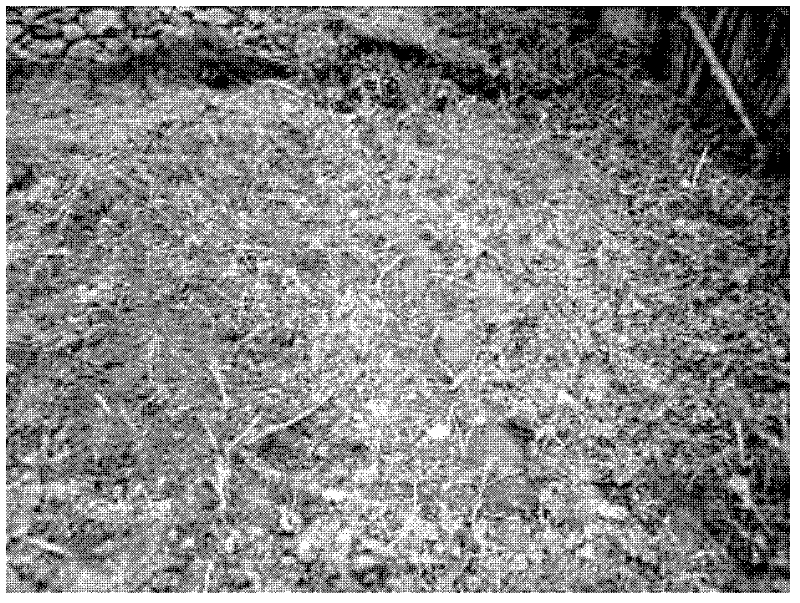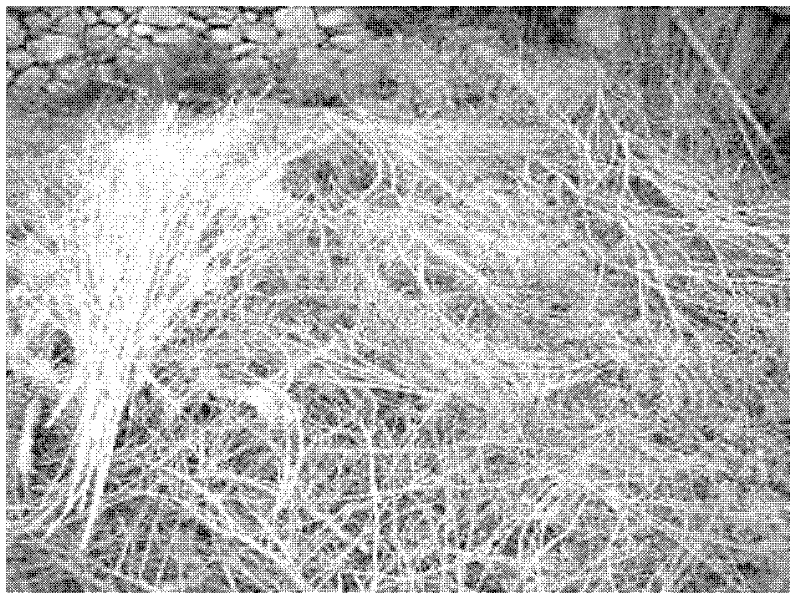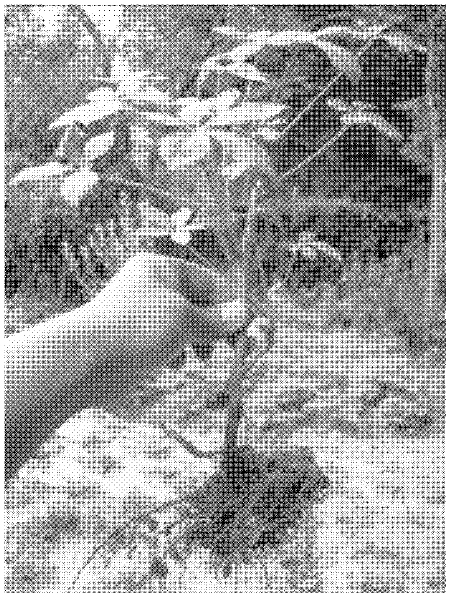Acanthopanax giraldii Harms artificial cultivation method
A technique of artificial cultivation of Radix Rhizoma Rhizoma Fructus, applied in the fields of botanical equipment and methods, horticulture, application, etc., can solve the problems of low survival rate, death, damage to seedlings, etc., to improve the living environment, improve the quality of life, improve effect on survival
- Summary
- Abstract
- Description
- Claims
- Application Information
AI Technical Summary
Problems solved by technology
Method used
Image
Examples
Embodiment 1
[0048] In November 2007 (the daily average temperature was 4°C, and the wild leaves of Acanthus radix had all fallen off), branches and woody stems of Acanthus radix were harvested from Fritillaria Mountain in Leyi Village, Sanlong Township, Mao County, and cut into Cutting branches with a length of 20cm to 30cm, each cutting branch has at least one bud node on the upper part, and a total of 100 cuttings are cut. For rooting treatment of cuttings, 20-100 mg / L naphthalene acetic acid or 20-100 mg / L indole butyric acid solution is usually used to soak the base for 6-8 hours, and other rooting-promoting auxin can also be used for soaking.
[0049] In the Ruowo Formation of Leyi Village at an altitude of 2,600 meters, set up a planting site for Acanthopanax acanthus, arrange the seedbeds, mix plant ash into the seedbeds, cover part of the seedbeds with plastic film after watering, and insert 100 cuttings of Acanthopanax radix obliquely and cover them with plastic film In the seedb...
Embodiment 2
[0055] In November 2008 (the second year) and November 2009 (the third year), 20 cuttings were excavated, and the projected diameter of the adventitious roots and the number of rhizome buds on the cuttings were recorded, and SPSS16.0 was used to perform t-test on the data . Table 2 shows the projected diameter of adventitious roots and the number of rhizome buds in different growth stages of cutting seedlings, image 3 It is the growth of cutting strips and adventitious roots in the third year after cutting.
[0056] Table 2 Diameter of adventitious root projection and number of rhizome buds of cutting seedlings in different growth stages
[0057]
[0058] The research found that Acanthus radix is fond of water and fertilizer, and the cuttings are required to be able to adapt to the changes of water and heat after being transplanted into the cultivation ground. Therefore, more adventitious roots can ensure the survival rate of the cuttings. In fact, in November 2008, we...
Embodiment 3
[0060] In November 2009, the cuttage strips of Acanthopanax orientalis were transplanted to the Zanthoxylum bungeanum field on the sunny slope. The canopy density of the Zanthoxylum bungeanum forest in August was about 0.3-0.5, and the film was used to preserve water and moisture. As of August 2010, 72 of the 80 transplanted clonal ramets survived. The height and number of clonal ramets transplanted were observed. The average height was 0.5m, and the average number of clonal ramets was 2.3. The above results show that the survival rate of the plants from the cuttings to the returned farmland under this set of techniques is 70%.
[0061] Therefore, during shading management after transplanting, the canopy density should be 0.3-0.5 for sunny slopes and 0-0.3 for shady slopes;
PUM
| Property | Measurement | Unit |
|---|---|---|
| Length | aaaaa | aaaaa |
Abstract
Description
Claims
Application Information
 Login to View More
Login to View More - R&D
- Intellectual Property
- Life Sciences
- Materials
- Tech Scout
- Unparalleled Data Quality
- Higher Quality Content
- 60% Fewer Hallucinations
Browse by: Latest US Patents, China's latest patents, Technical Efficacy Thesaurus, Application Domain, Technology Topic, Popular Technical Reports.
© 2025 PatSnap. All rights reserved.Legal|Privacy policy|Modern Slavery Act Transparency Statement|Sitemap|About US| Contact US: help@patsnap.com



